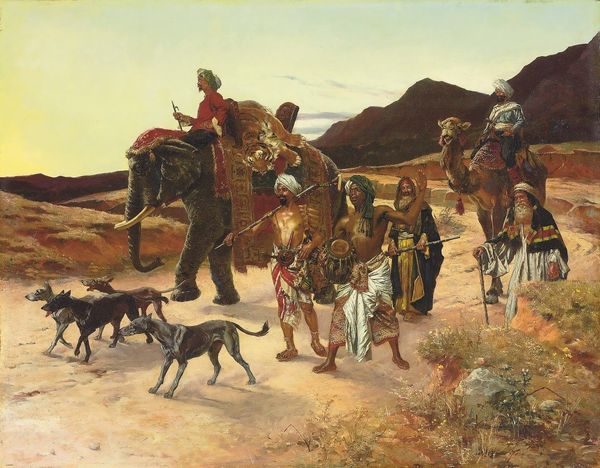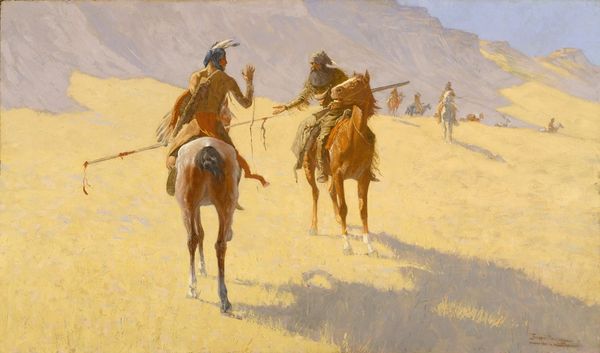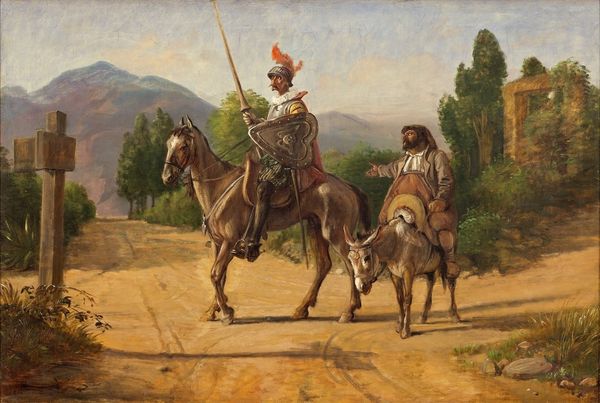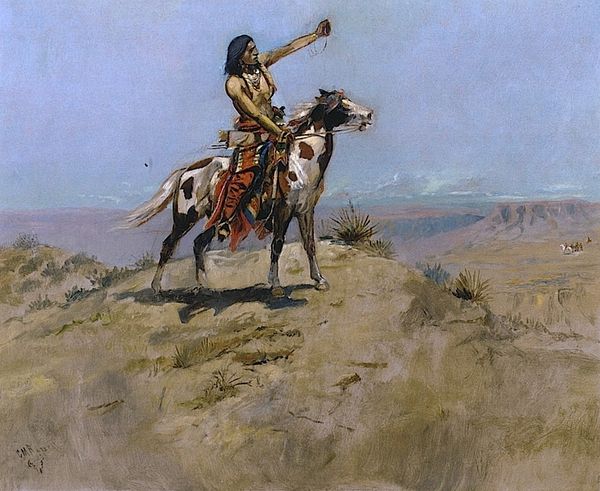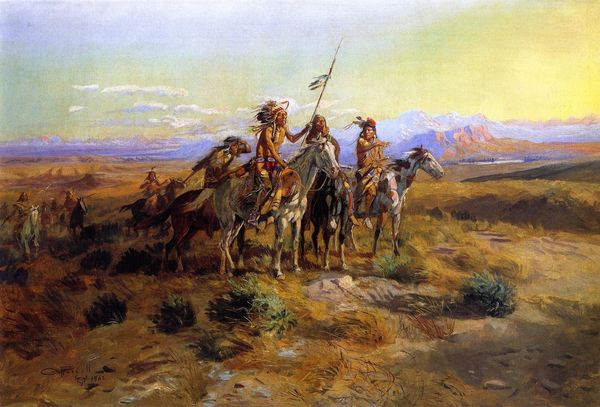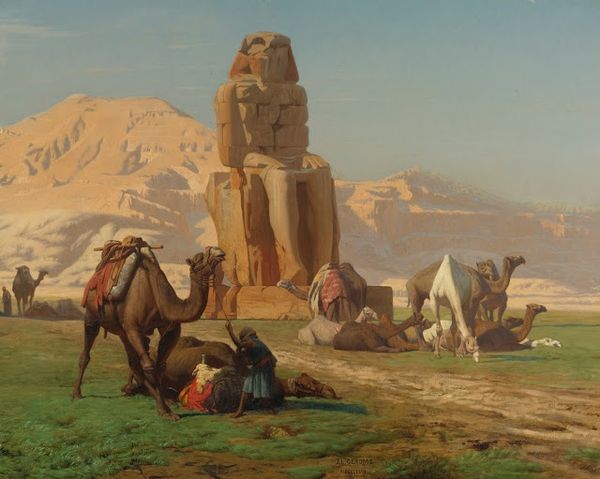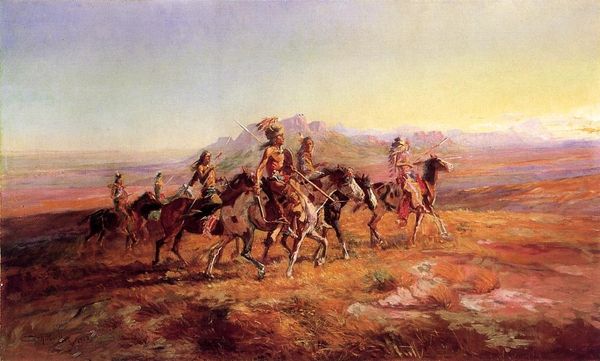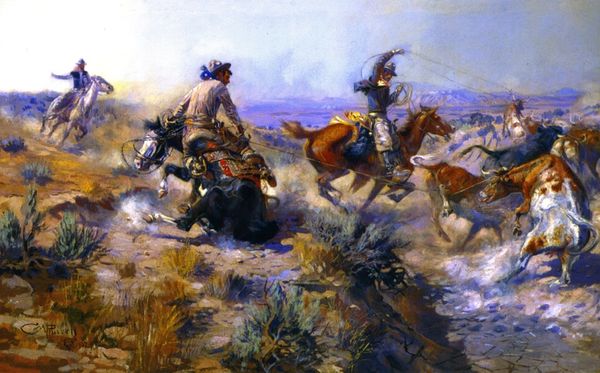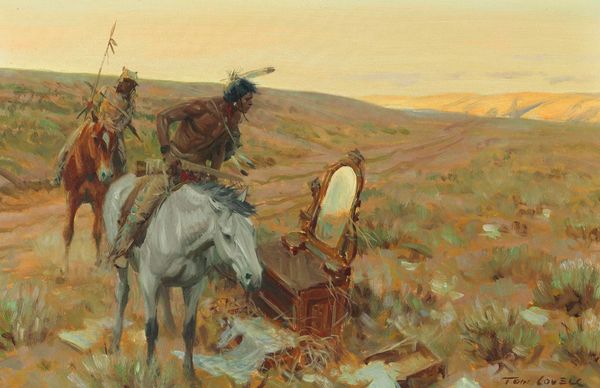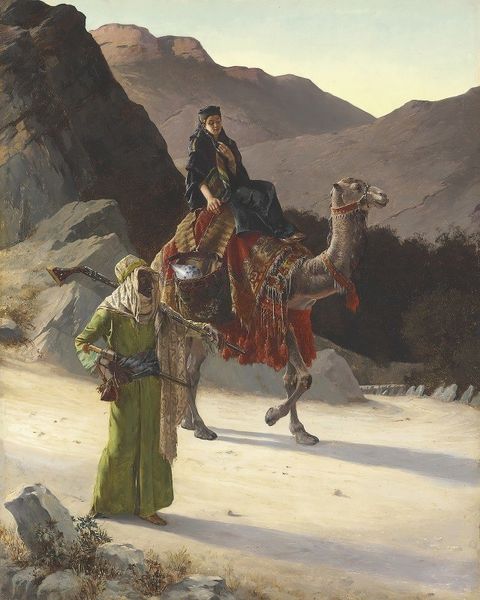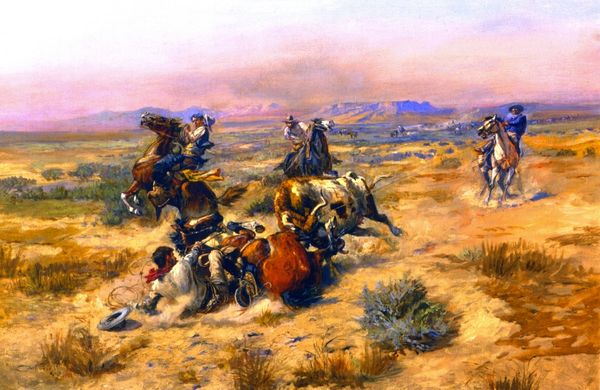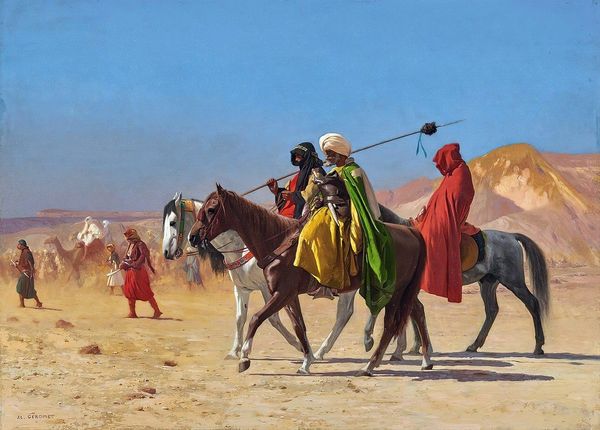
painting, oil-paint
#
portrait
#
figurative
#
painting
#
oil-paint
#
landscape
#
figuration
#
oil painting
#
orientalism
#
genre-painting
#
history-painting
#
academic-art
#
realism
Copyright: Public Domain: Artvee
Rudolf Ernst painted "A Captive Tiger" at some point between the late 19th and early 20th centuries. This piece speaks to the West's fascination with the "Orient", a fascination heightened by colonialism and the exoticism it both produced and consumed. Here, Ernst imagines a scene of men, presumably of Middle Eastern or North African origin, parading a captured tiger through a desert landscape. The image creates meaning through its visual codes, typical of Orientalist painting: the desert setting, the men's attire, and the presence of a wild animal under control. Ernst was Austrian, and the work reflects the power dynamics of the time, where European artists often depicted non-European cultures through a lens of Western dominance. It arguably comments on the social structures of its time, reinforcing a sense of European superiority. To fully grasp the image, research into Orientalist art and the colonial history of the period is essential. The meaning of art is contingent on its social and institutional context, and we as historians try to shed light on that.
Comments
No comments
Be the first to comment and join the conversation on the ultimate creative platform.
